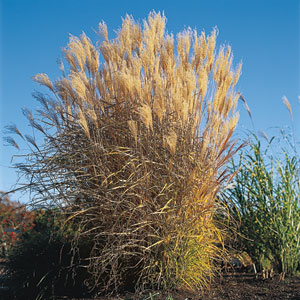
How a changing climate can affect ecosystems is an important and timely question, especially considering the recent global rise in greenhouse gases. Now, in an article published online on December 20th in the journal Current Biology, evolutionary biologists provide strong evidence that changes in global carbon dioxide levels probably had an important influence on the emergence of a specific group of plants, termed C4 grasses, which includes major cereal crops, plants used for biofuels, and species that represent important components of grasslands across the world.
C4 plants are specially equipped to combat an energetically costly process, known as photorespiration, that can occur under conditions of high temperature, drought, high salinity, and—ith relevance to these latest findings—low carbon dioxide levels. Although a combination of any of these factors might have provided the impetus behind the evolution of the various C4 lineages, it had been widely speculated that a drop in global carbon dioxide levels, occurring approximately 30 million years ago during the Oligocene period, may have been the major driving force. Establishing the link between the two, however, has proven difficult partly because there are no known fossils of C4 plants from this period. Enter Pascal-Antoine Christin and colleagues from the University of Lausanne, Switzerland, who decided to take an alternative approach to date a large group of grasses. By using a “molecular clock” technique, the authors were able to determine that the Chloridoideae subfamily of grasses emerged approximately 30 million years ago, right around the time global carbon dioxide levels were dropping. Furthermore, a model of the evolution of these grasses suggests that this correlation is not a trivial coincidence and instead reflects a causal relationship.
As the authors noted in their study, many of the C4 grasses evolved after the drop in global carbon dioxide levels 30 million years ago. How to explain this" The authors speculate that while an atmosphere low in carbon dioxide established the basic conditions necessary for C4 evolution, other ecological factors might be at work. In light of this, the authors hope to apply the same approaches used in the paper described here to investigate the role of other variables, such as drought, salinity, and flooding, in the evolution of C4 plants. In addition to improving our understanding of how climate changes influenced ecosystems in the past, such studies may allow predictions of how human activities could affect the planet in the future. Indeed, with regard to global carbon dioxide levels, Christin and colleagues write, “Besides its influence on climatic variables, increased CO2 concentration could trigger important ecological changes in major terrestrial ecosystems by affecting the distribution of C4-dominated biomes and the affiliated flora and fauna.” This implies that a reversal of the conditions that favored C4 plants could potentially lead to their demise—a startling prospect if one considers the human race’s reliance on C4 crops like corn, sugarcane, sorghum, and millets.
That's rather interesting since scientists claim to have found sauropod coprolites containing phytoliths, which are supposedly only from grass.
No comments:
Post a Comment